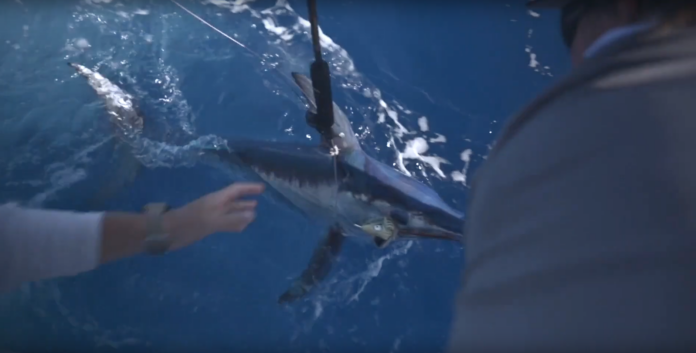During 2021, in partnership with NOAA, the Gray FishTag research team deployed three Wildlife Computer MiniPSAT tags to track the migration and behavior of this well sought-after species, the swordfish.
The first tag was deployed with Captain Nick Stanczyk aboard the Broad Minded offshore Islamorada, Florida on Feb. 9, 2021, and the tag released about 69 nautical miles off Fernandina Beach, Florida. This tag released on Sept. 10, 2021. The 53-inch, 65-pound fish was at large for 213 days.
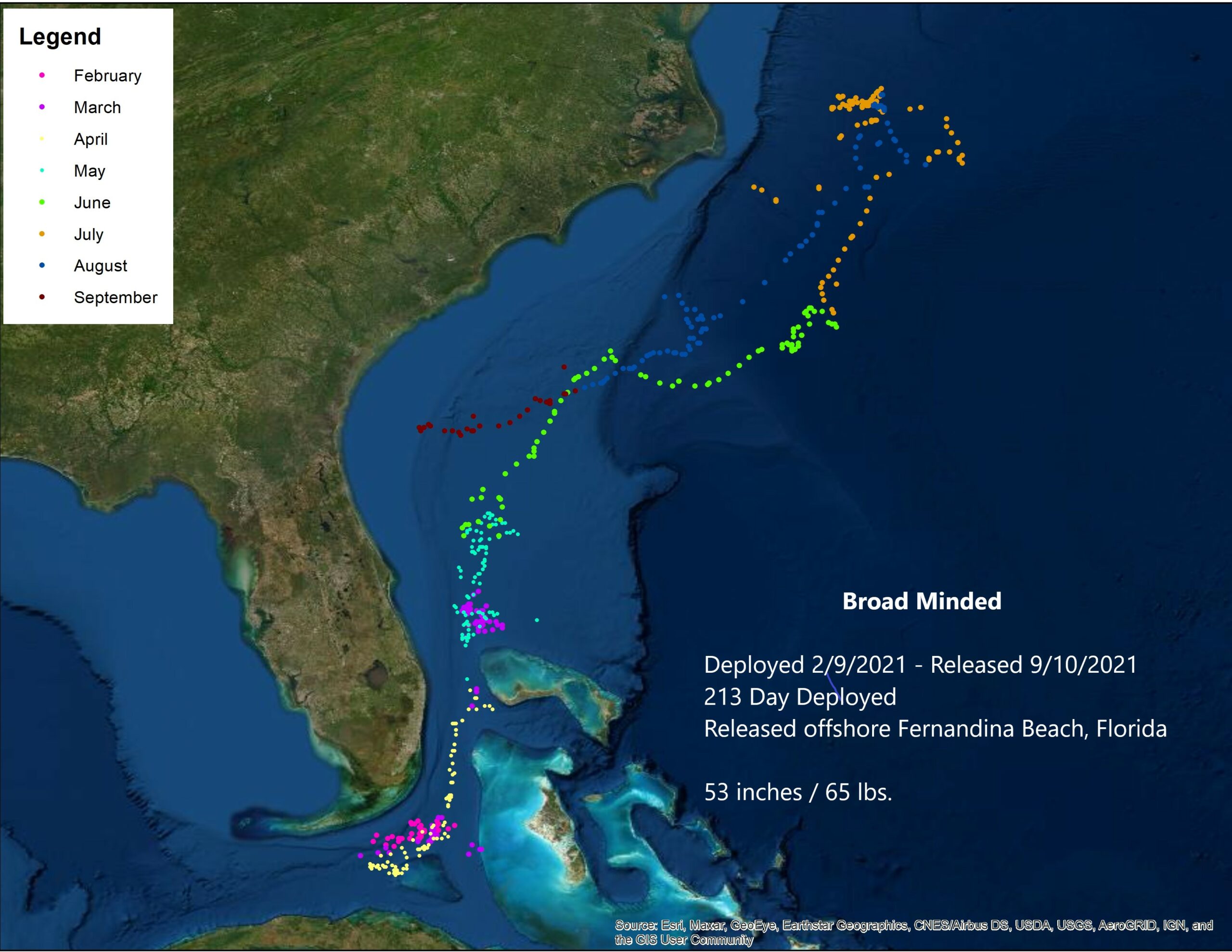
The second tag was deployed with Captain Chris Koulouvaris on May 1, 2021, during our GFR SwordQuest event offshore Fort Lauderdale, Florida and the tag released 38 nautical miles offshore Grand Cayman Islands. This tag released on Dec. 29, 2021. The 80-inch, 240-pound fish was at large for 242 days.
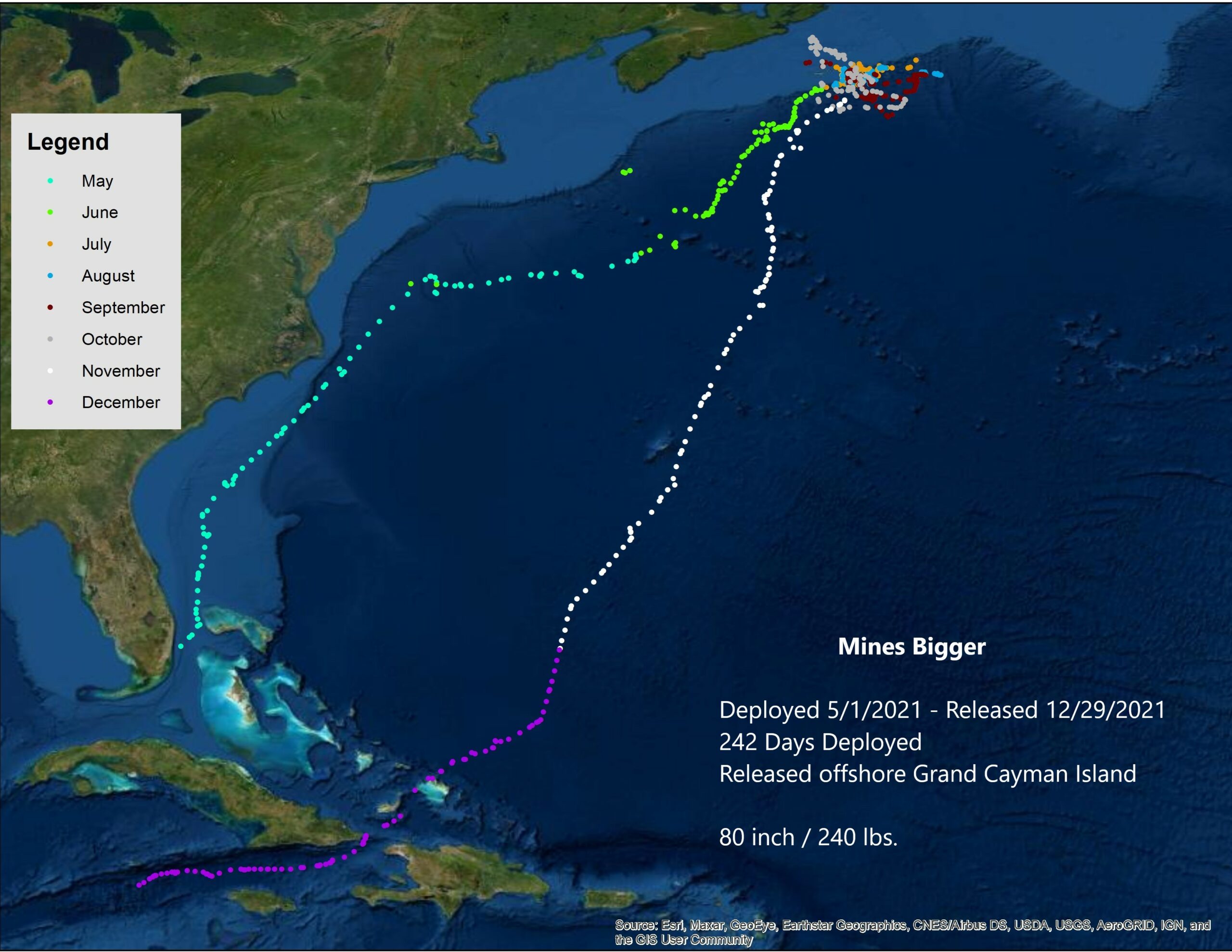
The third tag was deployed on May 1, 2021, during our GFR SwordQuest event with Captain Bouncer Smith and Baron Libasci offshore Fort Lauderdale, Florida and the tag released offshore Novia Scotia. This tag released on November 3, 2021. The 72-inch, 120-pound fish was at large for 180 days.
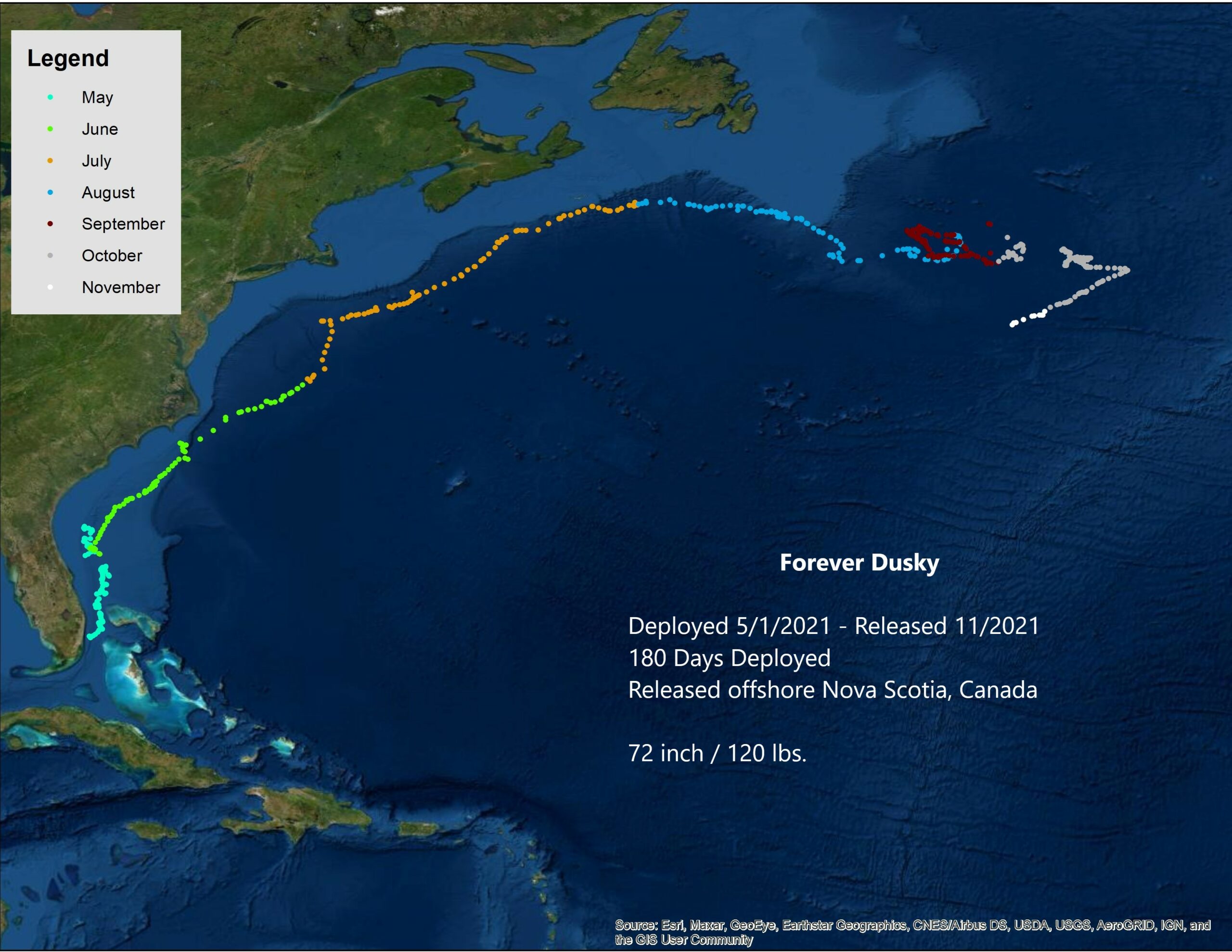
A few interesting things observed on the tags deployed:
- The team confirmed that swordfish every day and everywhere “travel” in a 12-hour period from the surface to the bottom in daylight and darkness. It is a straight dive to the bottom during daybreak and a straight ascend to the surface at dusk.
- There is an absolute migration in the Gulf Stream to the Grand Banks and through the Caribbean.
- There was a shift to deeper depths during the day when the fish moved into an area where the temperature at depth was warmer. Without question, water temperature plays a significant role to where the fish lives.
- There were several basking events which did not seem to be correlated exclusively with minimum temperature. There were four occasions where the fish was basking at the surface.
- On the full moon, the fish shifted slightly deeper. These fish maintain a depth of 50 feet to 300 feet at night and lived within 300 feet of the bottom during the day due to the moon phase. Moonlight dictated how close to the surface they went at night.
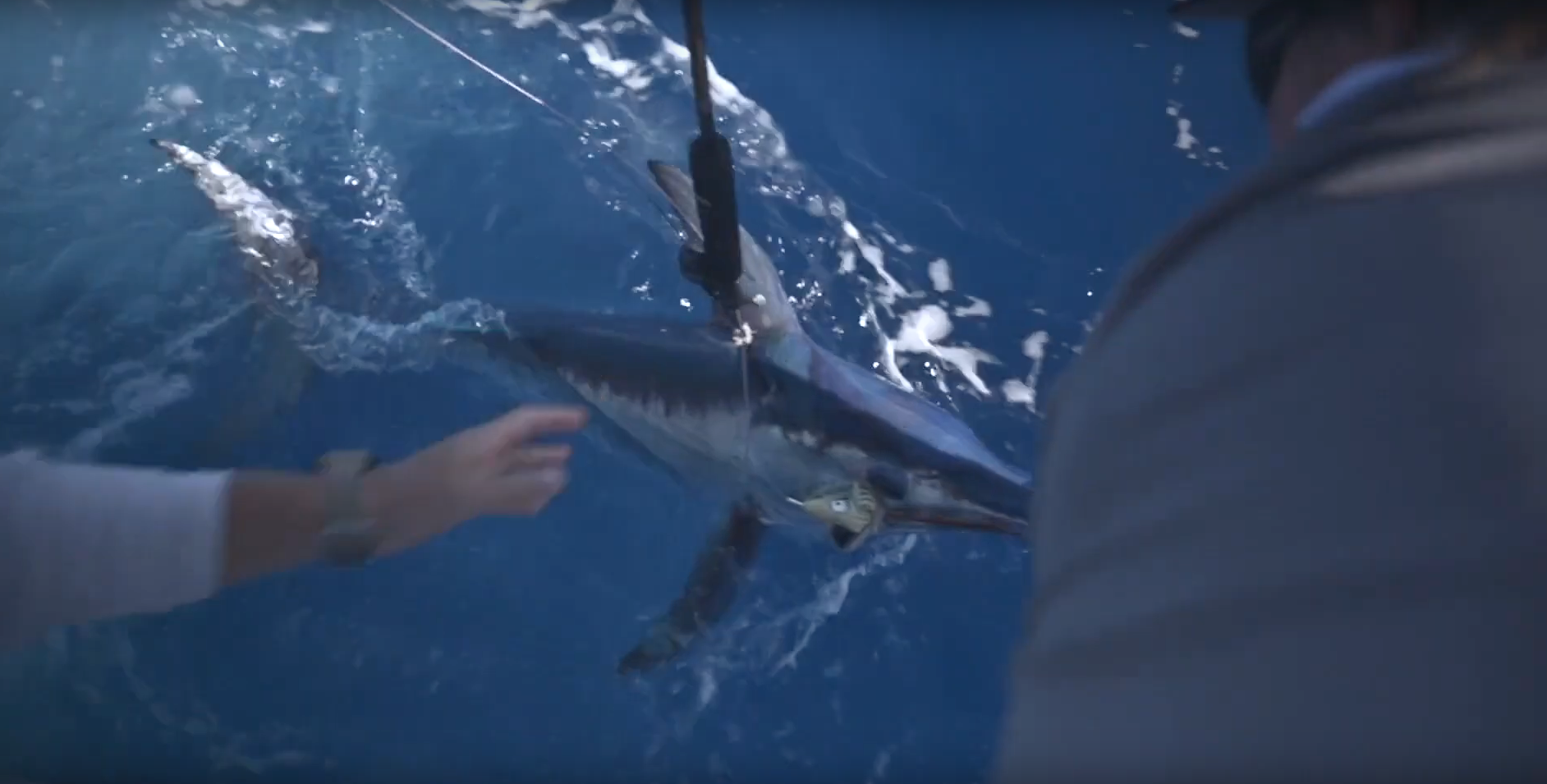
TAGGED – The Grays team at work tagging a swordfish.

